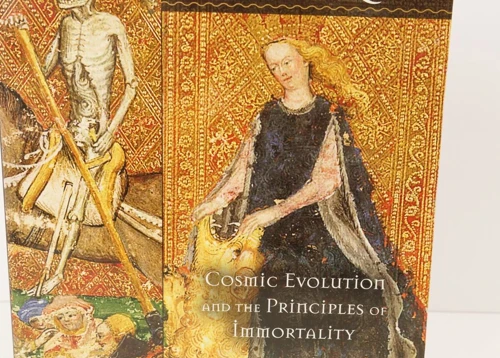Unveiling the Ancient Roots of Tarot: A Journey into the Mystical Origins and Symbolism of the Tarot Cards
Have you ever gazed at the intricate symbols and mysterious imagery adorning a deck of tarot cards and wondered about their ancient origins? The history of tarot is filled with captivating tales of ancient mysticism, esoteric traditions, and the profound influence of astrology and symbolism. In this article, we will delve deep into the enigmatic past of tarot, exploring its origins, evolution, and the ancient symbolism encoded within its cards. We will uncover how tarot is intricately connected to ancient mystical practices such as hermeticism, alchemy, Kabbalah, and astrology. Additionally, we will examine the impact of ancient tarot on modern readings and explore popular tarot decks that have deep-rooted connections to the past. Join us on this fascinating journey as we uncover the hidden secrets of tarot and shed light on its enduring appeal in the modern era.
Contents
- The History of Tarot
- Ancient Tarot Symbolism
- The Connection to Ancient Mysticism
- Tarot and the Esoteric Traditions
- The Influence of Ancient Tarot on Modern Readings
- Popular Tarot Decks and their Ancient Connections
- The Modern Tarot Renaissance
- Conclusion
-
Frequently Asked Questions
- 1. What is the significance of the Major Arcana in tarot?
- 2. Are tarot card interpretations universal or subjective?
- 3. Can tarot cards predict the future?
- 4. How does astrology connect with tarot?
- 5. What is the difference between the Rider-Waite Tarot Deck and the Thoth Tarot Deck?
- 6. Is tarot associated with any specific religions?
- 7. Can I learn to read tarot on my own?
- 8. Are there different spreads for tarot readings?
- 9. Can anyone receive an accurate tarot reading?
- 10. How can tarot cards be used for personal growth and self-reflection?
- References
The History of Tarot
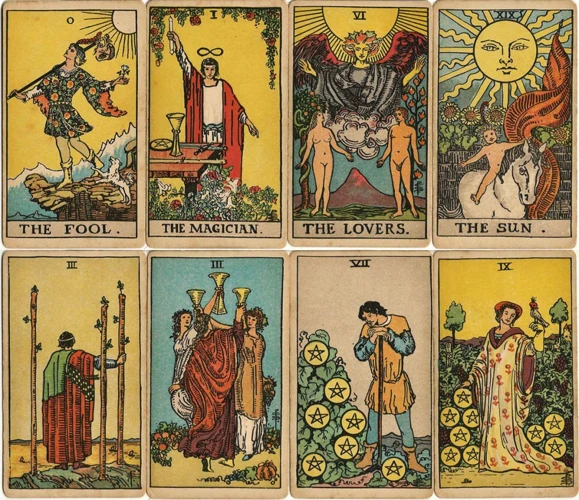
The study of tarot’s history takes us on a captivating journey through time, tracing its beginnings to ancient civilizations and uncovering its fascinating evolution over the years. To understand the roots of tarot, we must first explore its historical origins. Tarot cards are believed to have originated in medieval Europe, primarily in Italy and France. While the exact birthplace of tarot remains a topic of debate, some scholars suggest that the cards may have emerged in the 15th century, possibly in Italy or Egypt.
Ancient texts, such as the “Book of Thoth”, have been linked to the origins of tarot, with some claiming that the cards were used in ancient Egyptian spiritual practices. However, the evidence supporting this connection is speculative and lacks concrete proof.
During the 15th century, tarot cards were primarily used for playing games, with no mystical or divinatory associations. It wasn’t until the 18th century, known as the “Age of Enlightenment,” that tarot began to be viewed as a tool for spiritual exploration and fortune-telling.
As interest in occultism and esoteric practices grew during the 19th century, tarot experienced a major transformation. Influenced by various occult movements, such as the Hermetic Order of the Golden Dawn, tarot decks were redesigned to incorporate intricate symbolism and esoteric meanings.
The 20th century saw tarot cards gaining even more popularity, with notable figures like Aleister Crowley and Arthur Edward Waite contributing to the development and interpretation of tarot decks. Crowley’s Thoth Tarot Deck, infused with his deep understanding of mysticism and symbolism, further expanded the depths of tarot’s esoteric connections.
Today, tarot continues to hold a significant place in both spiritual and secular realms. Its rich history, diverse symbolism, and enduring appeal make tarot an intriguing subject that continues to captivate and inspire seekers of wisdom and insight.
The Origins of Tarot
The origins of tarot cards remain shrouded in mystery and speculation, giving rise to various theories and hypotheses about their inception. While there is no definitive answer, historians and scholars have traced the beginnings of tarot cards to medieval Europe, particularly Italy and France. Some suggest that tarot may have originated in the 15th century, possibly in Italy or Egypt, while others propose a connection to ancient mystical practices. However, the exact birthplace and origins of tarot cards remain elusive, adding to their enigmatic allure and the sense of intrigue surrounding them. To this day, the true origins of tarot continue to be a subject of fascination and ongoing research.
The Evolution of Tarot
The evolution of tarot is a fascinating journey that reflects the changing attitudes and beliefs surrounding these mystical cards. From their humble origins as playing cards in medieval Europe to their widespread use as tools for divination and spiritual exploration, tarot has undergone significant transformations throughout history.
In their early days, tarot cards were similar to regular playing cards, consisting of four suits: swords, cups, coins (or pentacles), and staves (or wands). These early decks, known as the “Tarot de Marseille,” featured simple, straightforward imagery without the elaborate symbolism that is now synonymous with tarot.
During the 18th century, tarot experienced a shift in perception as occultists and scholars began to assign deeper meanings to the cards. This period, known as the occult revival, saw the creation of decks such as the Etteilla Tarot, which introduced additional esoteric symbolism and interpretations.
However, it was not until the late 19th century that a significant evolution in tarot took place. The Rider-Waite Tarot deck, created by artist Pamela Colman Smith and occultist Arthur Edward Waite, revolutionized the world of tarot with its rich imagery and symbolism.
The Rider-Waite Tarot deck was the first to incorporate detailed illustrations on all 78 cards, including the Minor Arcana. This deck served as a bridge between the esoteric traditions of the past and the emerging interest in psychology and symbolism.
Following the Rider-Waite deck, tarot continued to evolve through various artistic interpretations and reinterpretations. Artists and tarot enthusiasts developed countless new decks, each with their own unique aesthetic and perspective.
One such deck is the Thoth Tarot deck, created by Aleister Crowley and artist Lady Frieda Harris. This deck, deeply influenced by Crowley’s spiritual beliefs and knowledge of occult practices, delved even further into the esoteric aspects of tarot.
In recent years, tarot has continued to evolve with the rise of digital technology and online communities. Now, enthusiasts can explore a wide range of tarot decks, both traditional and innovative, and engage in virtual tarot readings and discussions.
The evolution of tarot has seen it transcend its origins as a simple deck of playing cards to become a profound and versatile tool for self-discovery, spiritual guidance, and divination. Its enduring popularity and adaptability are a testament to the powerful symbolism and universal appeal of these ancient cards.
Ancient Tarot Symbolism
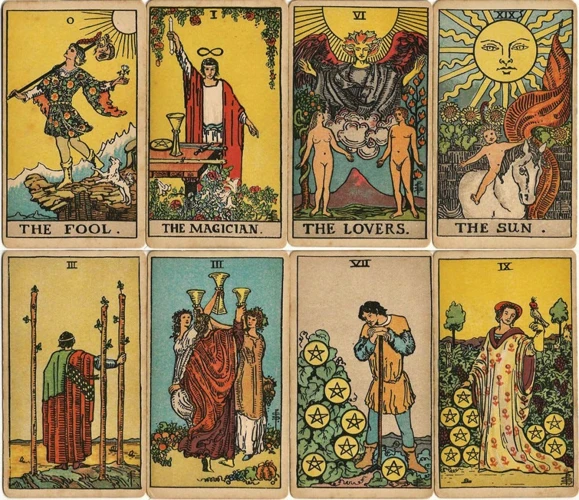
The Major Arcana
The ancient tarot cards are divided into two main categories: the Major Arcana and the Minor Arcana. The Major Arcana consists of 22 cards, each representing a significant archetype or spiritual concept. These cards are often seen as the cornerstone of tarot readings, carrying profound symbolism and deep spiritual meanings.
Each card in the Major Arcana depicts a unique image that embodies a specific concept or theme. For example, The Fool symbolizes new beginnings and innocence, while The Magician represents manifestation and personal power. The Hierophant signifies spiritual guidance and tradition, while The World signifies completion and fulfillment.
When interpreting the Major Arcana in a tarot reading, the cards are considered key players in shaping the narrative and providing insights into the querent’s journey and life path.
The Minor Arcana
The Minor Arcana consists of 56 cards, divided into four suits: Cups, Wands, Swords, and Pentacles. Each suit represents a different aspect of life and carries distinct symbolism.
The Cups suit is associated with emotions, relationships, and creativity. The Wands suit represents passion, motivation, and personal growth. The Swords suit symbolizes intellect, challenges, and the power of the mind. The Pentacles suit is connected to the material world, finances, and abundance.
Within each suit, there are four court cards: Page, Knight, Queen, and King. These court cards embody different personalities and archetypes, providing additional layers of meaning and depth to tarot readings.
When combined with the Major Arcana, the Minor Arcana adds further nuance and detail to tarot interpretations, offering guidance and insights into specific areas of life and experiences.
Major Arcana
The Major Arcana is a key component of the tarot deck, consisting of 22 cards that hold significant symbolic meaning and represent major life events and archetypal energies. Each card in the Major Arcana possesses its own unique symbolism and serves as a gateway to deeper insights and spiritual understanding. From the Fool, symbolizing new beginnings and stepping into the unknown, to the World, representing completion and fulfillment, these cards take us on a transformative journey through the human experience. The Major Arcana cards embody universal themes and lessons that resonate with people across cultures and generations, making them a powerful tool for personal growth, self-reflection, and divination. Whether consulting them for guidance or simply appreciating their beauty and symbolism, the Major Arcana cards continue to hold a significant place in the world of tarot.
Minor Arcana
The is a crucial component of the tarot deck, offering insight into daily life, relationships, and the struggles and triumphs of the human experience. Consisting of four suits, usually named Wands, Cups, Swords, and Pentacles, the Minor Arcana represents the more practical, day-to-day aspects of life.
Each suit within the Minor Arcana contains 14 cards, including ten numbered cards (Ace through Ten) and four court cards (Page, Knight, Queen, and King). The numbered cards showcase the progression of energy and situations within their respective suit, while the court cards embody distinct personalities and archetypes.
Wands, also known as Staves or Rods, represent the element of fire and symbolize creativity, passion, and personal power. These cards often indicate ambition, energy, and growth. Cups, associated with the element of water, represent emotions, intuition, and the realm of relationships. They offer insights into love, healing, and matters of the heart.
Swords, linked to the element of air, symbolize thoughts, communication, and mental faculties. The Swords cards can indicate intellectual challenges, conflicts, or breakthroughs. Lastly, Pentacles, often represented by coins or discs, represent the element of earth and embody the material world, finances, health, and practical matters.
When interpreting the Minor Arcana, it’s essential to consider the symbolism within each card and how it relates to the seeker’s individual circumstances. The imagery, numbers, and suits all contribute to the overall meaning and message of the cards. Whether it’s the fiery energy of the Wands, the emotional depth of the Cups, the intellectual realm of the Swords, or the grounded practicality of the Pentacles, the Minor Arcana cards provide guidance and insight into the various aspects of our lives.
The Connection to Ancient Mysticism
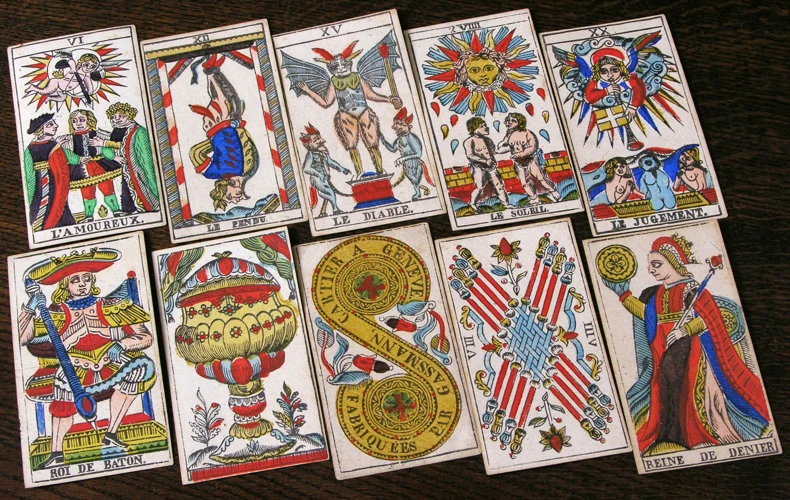
The origins of tarot cards can be traced back to ancient mystical traditions that sought deeper insights into the mysteries of the universe. Two prominent ancient mystical practices, Hermeticism and alchemy, have significant ties to the symbolism and interpretation of tarot.
Hermeticism and Tarot: Hermeticism, an ancient philosophical and spiritual tradition, heavily influenced the development of tarot cards. The teachings of Hermes Trismegistus, the legendary figure associated with Hermeticism, emphasized the interconnection of the spiritual and material worlds. This notion is mirrored in the tarot’s symbolism, where each card represents deep universal truths and archetypal concepts. The Tarot’s Major Arcana, especially, reflects the spiritual journey of the Fool as he encounters various cosmic forces and gains wisdom and enlightenment along the way.
Alchemy and Tarot: Alchemy, the medieval precursor to modern chemistry, also played a significant role in shaping the symbolism present in tarot cards. Just as alchemists aimed to transform base metals into gold through a process of purification and transmutation, tarot cards represent the transformation of the human psyche and the spiritual journey towards self-realization. The concept of alchemical transmutation finds parallels in the tarot’s Minor Arcana, where each suit represents an elemental force that must be balanced and harmonized to attain wholeness.
By incorporating the principles of Hermeticism and alchemy into its symbolism, tarot offers a pathway to understanding and reflecting upon the mysteries of life, the interconnectedness of the cosmos, and the transformative potential within each individual.
Hermeticism and Tarot
Hermeticism, an ancient philosophical and mystical tradition, holds a profound connection to tarot, shaping its symbolism and interpretation. The teachings of Hermes Trismegistus, a legendary figure associated with wisdom and esoteric knowledge, heavily influenced the development of tarot and its portrayal of archetypal principles. In Hermeticism, the concept of “as above, so below” aligns with the idea of the microcosm and the macrocosm, which is deeply ingrained in tarot’s structure and meaning. The hermetic principles of correspondence, polarity, and rhythm also find resonance in the tarot cards, where each card represents a unique aspect of existence and conveys a specific energy or message. The interplay between hermetic philosophy and tarot has resulted in a profound union of mystical wisdom and divination, allowing individuals to delve into the depths of their consciousness and connect with the universal truths encoded within the cards.
Alchemy and Tarot
Alchemy and tarot share a deep connection, interweaving ancient symbols and spiritual philosophies. In the realm of alchemy, the transformation of base metals into gold symbolizes the transmutation of the human spirit into a higher state of being. Similarly, tarot cards embody this concept of transformation and self-discovery.
Throughout history, alchemists sought to unlock the secrets of the universe by exploring the hidden forces and energies at play. They believed in the concept of the philosopher’s stone, a mythical substance said to have the power to transform and transmute. This idea of transformation aligns with the symbolism found in tarot cards.
Many tarot decks feature alchemical symbols, such as the sun, moon, and various elements. These symbols represent different stages of the alchemical process, mirroring the spiritual journey of the individual. The Fool card, for example, symbolizes the beginning of the alchemical journey, where one sets out on a path of self-discovery and transformation.
The Major Arcana cards in tarot also hold parallels to the stages of alchemical transformation. The Death card represents the dissolution of the old, making way for new beginnings, much like the alchemical process of putrefaction and purification. The Temperance card embodies the harmony and balance achieved through the union of opposing forces, reflecting the alchemical concept of balancing and harmonizing the elements.
Both alchemy and tarot strive to uncover the hidden truths and mysteries of the universe. They provide pathways for self-reflection, inner growth, and personal transformation. When combined, alchemy and tarot create a powerful tool for spiritual exploration and self-realization, inviting individuals to embark on an inner alchemical journey.
The interconnectedness of alchemy and tarot demonstrates how spiritual and esoteric traditions blend together, enriching our understanding of ourselves and the world around us. As we explore the alchemical symbolism present in tarot cards, we unlock the potential for profound insights, enlightenment, and personal development.
Tarot and the Esoteric Traditions
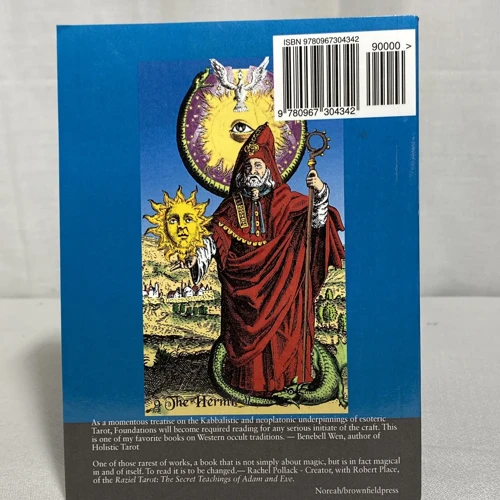
The connection between tarot and the esoteric traditions runs deep, as the cards are intricately linked to various mystical and occult practices. Two significant esoteric traditions that have greatly influenced tarot are Hermeticism and alchemy.
- Hermeticism and Tarot: Hermeticism, a system of esoteric beliefs and philosophies rooted in ancient Egypt, holds a close relationship with tarot. The teachings of Hermes Trismegistus, the legendary figure associated with Hermeticism, emphasize the interconnectedness of the spiritual and material realms. This concept aligns with the symbolism found in tarot cards, where each card represents a unique aspect of the divine and the human experience. The mystical teachings of Hermeticism provide a framework through which tarot readers can tap into the wisdom and mysteries embodied in the cards.
- Alchemy and Tarot: Alchemy, the spiritual and philosophical tradition of transforming base metals into gold, also has profound connections to tarot. Both alchemy and tarot share a language of symbols and archetypes that serve as gateways to deeper understanding. The alchemical process of transmutation mirrors the transformative journey depicted in tarot’s Major Arcana. The Fool’s journey through the cards represents the path of spiritual growth and self-discovery, much like the alchemist’s quest for personal and spiritual transformation. The symbolism and imagery of alchemy enrich the layers of meaning found within tarot, providing seekers with a profound tool for inner exploration and enlightenment.
The integration of these esoteric traditions into tarot has expanded its potential for divination, self-reflection, and spiritual growth. As practitioners delve into the depths of tarot symbolism, they engage with ancient wisdom and mystical teachings, unlocking profound insights and guidance along their spiritual journey.
The Kabbalah and Tarot
The Kabbalah, an ancient mystical tradition rooted in Jewish mysticism, has a profound connection to the world of tarot. The intricate symbolism and esoteric teachings of the Kabbalah intertwine with the archetypal imagery portrayed in tarot cards. The Tree of Life, a central concept in Kabbalistic philosophy, serves as a framework for understanding the relationships between the different elements of existence. Similarly, the tarot’s major arcana cards can be seen as a symbolic representation of the stages of spiritual enlightenment and personal growth. The correspondences between the twenty-two paths of the Tree of Life and the major arcana cards provide a profound insight into the interplay between the spiritual and physical realms. Through studying and meditating on the Kabbalistic and tarot symbolism, practitioners can unlock deeper layers of meaning and gain a more profound understanding of their own spiritual journey.
Astrology and Tarot
Astrology and tarot have a deep-rooted and symbiotic relationship, with both systems interconnected through symbolism, archetypes, and cosmic influences. The melding of astrology and tarot allows for a deeper understanding of the human experience and provides a pathway to spiritual growth and self-discovery.
Each tarot card is associated with a specific astrological correspondence, linking the energies of the planets and zodiac signs to the symbolism of the cards. This connection allows tarot readers to tap into the cosmic forces at play and gain insights into the querent’s life and potential outcomes.
The Major Arcana cards, especially, often reflect astrological archetypes. For example, The Magician card is linked to the planet Mercury, representing communication, intellect, and adaptability. Similarly, The Empress card embodies the qualities of Venus, symbolizing beauty, love, and abundance.
Astrology also influences the interpretation of tarot card spreads. Tarot readers may consider the position and alignment of the celestial bodies at the time of the reading, incorporating astrological aspects and transits into their analysis. This cosmic context adds an additional layer of depth and specificity to the reading.
Tarot can be used as a tool for exploring and understanding one’s astrological birth chart. By incorporating the tarot into astrological consultations or birth chart analyses, individuals can gain a more profound understanding of their unique cosmic blueprint and how it influences their life’s path.
Astrology and tarot continue to influence and inspire each other, with modern tarot decks often incorporating astrological motifs and symbolism. Some decks even feature specific astrological spreads and techniques for exploring astrological influences.
The integration of astrology and tarot enhances the spiritual experience and provides seekers with a broader perspective on their lives and the cosmic energies at play. By understanding the interconnectedness of these two ancient systems, individuals can gain profound insights and navigate their journey with greater clarity and wisdom.
The Influence of Ancient Tarot on Modern Readings
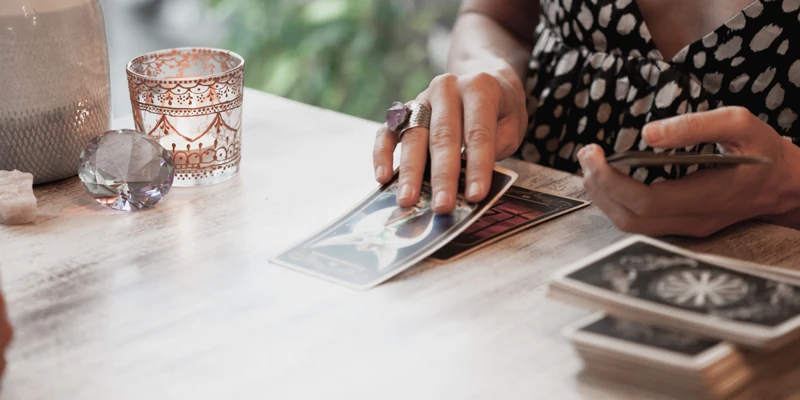
Ancient tarot holds a profound influence on modern readings, shaping the way we interpret the cards and unlocking the deeper layers of symbolism they embody. The evolution of tarot throughout history has contributed to the development of various reading practices and approaches to divination.
In the 19th century, tarot experienced a revival of interest, particularly through the works of prominent occultists and mystics like Eliphas Levi and Papus. These individuals explored the mystical and symbolic aspects of tarot, paving the way for a more intuitive and esoteric approach to readings.
During the 20th century, the publication of the Rider-Waite Tarot Deck, created by Arthur Edward Waite and illustrated by Pamela Colman Smith, revolutionized tarot readings. This deck introduced vivid and rich imagery that closely aligned with esoteric symbolism, making the cards more accessible and meaningful to a wider audience.
Modern tarot reading practices draw inspiration from the ancient roots of tarot, incorporating elements from various esoteric traditions. Many readers integrate astrology into tarot readings, recognizing the deep relationship between the two practices. Astrological symbolism, such as zodiac signs and planetary influences, can enhance the interpretation of tarot cards, adding layers of insight and depth.
The influence of ancient mysticism, such as Hermeticism and the Kabbalah, continues to resonate in modern tarot readings. These belief systems provide frameworks for understanding the spiritual and metaphysical aspects of the cards, allowing readers to tap into ancient wisdom and arcane traditions.
The ancient roots of tarot card reading have left an indelible mark on how we approach and interpret the cards today. By recognizing and honoring the connections to ancient traditions, modern readers are able to unlock the true power and wisdom that lies within the tarot deck.
Tarot in the 19th Century
In the 19th century, tarot underwent a resurgence in interest and exploration, particularly within the realm of the occult and esoteric traditions. During this time, tarot was associated with spiritualism, theosophy, and various secret societies, leading to a reimagining of the cards’ symbolism and purpose. Influential organizations like the Hermetic Order of the Golden Dawn played a pivotal role in shaping the interpretation and use of tarot during this era. The Golden Dawn introduced a system of tarot divination that aligned the cards with Kabbalistic and astrological principles, deepening their mystical significance. This period also saw the creation of iconic tarot decks like the Rider-Waite Tarot Deck, a collaboration between artist Pamela Colman Smith and occultist Arthur Edward Waite. With its detailed imagery and symbolism, the Rider-Waite deck became a standard reference point for tarot readers and enthusiasts. As tarot gained recognition as a tool for personal and spiritual exploration, its popularity skyrocketed, setting the stage for its continued evolution into the 20th century.
Tarot in the 20th Century
The 20th century marked a significant period for the evolution and influence of tarot, as it underwent a revitalization and expansion in its interpretation and usage. During this era, tarot gained recognition as a powerful tool for spiritual exploration and self-discovery.
Aleister Crowley, a prominent occultist and ceremonial magician, made noteworthy contributions to tarot with the creation of his Thoth Tarot Deck. Crowley, influenced by various occult traditions and his deep knowledge of mysticism, infused his deck with intricate symbolism and esoteric meanings. The Thoth Tarot Deck became highly regarded for its depth and complexity, attracting the interest of both seasoned practitioners and newcomers to tarot.
In the early 20th century, Arthur Edward Waite, a prominent occultist and member of the Hermetic Order of the Golden Dawn, collaborated with artist Pamela Colman Smith to create the iconic Rider-Waite Tarot Deck. This deck, characterized by its rich imagery and intuitive symbolism, became immensely popular and served as the foundation for many subsequent tarot decks.
The 20th century also witnessed an increase in the availability and accessibility of tarot decks, as printing technology advanced and allowed for mass production. This led to the widespread dissemination of tarot decks and contributed to the democratization of tarot as a divinatory and spiritual tool.
Tarot’s popularity continued to grow throughout the century, with individuals from various backgrounds embracing the practice of tarot reading. Tarot decks began to incorporate diverse themes and artistic styles, catering to different tastes and interests.
As the century progressed, interest in tarot expanded beyond traditional occult circles and found a place in popular culture. Tarot cards and references to tarot symbolism became prevalent in literature, films, and art, further solidifying tarot’s place in the modern zeitgeist.
Today, the influence of tarot in the 20th century can still be felt, as modern tarot practitioners draw inspiration from the decks and interpretations that emerged during this transformative era. The diversity and innovation of tarot during this time have laid the groundwork for the continued exploration and evolution of tarot in the 21st century and beyond.
Popular Tarot Decks and their Ancient Connections
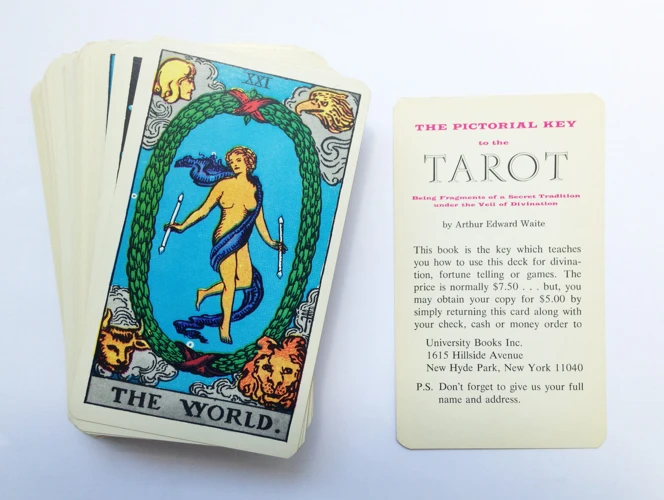
There are numerous tarot decks available today, each with its own unique symbolism and artistic interpretations. Let’s explore a couple of popular tarot decks and their ancient connections:
The Rider-Waite Tarot Deck, also known as the Rider Tarot or Waite-Smith Tarot, is one of the most widely recognized and used tarot decks in the world. Created by artist Pamela Colman Smith and occultist Arthur Edward Waite in the early 20th century, this deck revolutionized the visualization of tarot. The deck incorporates rich symbolism, drawing from various esoteric traditions such as astrology, numerology, and the Kabbalah. It features 78 cards, divided into the Major Arcana and Minor Arcana, each card depicting archetypal figures and situations that hold deep symbolic meanings.
The Thoth Tarot Deck, designed by the infamous occultist Aleister Crowley and artist Lady Frieda Harris, is another influential and widely studied tarot deck. Crowley’s deck is heavily steeped in mysticism and draws inspiration from different ancient traditions, including Egyptian mythology and the Hermetic Order of the Golden Dawn. The deck features vivid imagery, intricate symbolism, and profound esoteric connections. It showcases a deep understanding of astrology, alchemy, and ancient mystical philosophies.
These popular tarot decks not only serve as tools for divination and self-reflection but also provide a glimpse into the ancient connections and wisdom that continue to resonate with seekers of spiritual knowledge. Whether one chooses the Rider-Waite Tarot Deck or the Thoth Tarot Deck, these decks offer a gateway to exploring the ancient roots and profound symbolism embedded within the practice of tarot reading.
Rider-Waite Tarot Deck
The is one of the most popular and influential tarot decks in existence. Created by artist Pamela Colman Smith and published by the Rider Company in 1910, the Rider-Waite deck revolutionized the world of tarot with its groundbreaking illustrations and symbolism. This deck, designed in collaboration with occultist Arthur Edward Waite, sought to create a visually appealing and accessible deck that would appeal to both beginners and seasoned tarot readers.
One of the notable features of the Rider-Waite Tarot Deck is its rich symbolism, which draws heavily from esoteric traditions, astrology, and the Kabbalah. Each card is meticulously illustrated, depicting vibrant scenes and archetypal figures that imbue the deck with deep meaning and spiritual significance. The Major Arcana cards of the Rider-Waite deck particularly stand out, with iconic images such as The Fool, The Magician, and The High Priestess, among others, becoming widely recognized symbols.
Another key aspect of the Rider-Waite deck is its emphasis on intuitive interpretations. The imagery on the cards serves as a visual cue, aiding readers in connecting with their intuition and tapping into the collective unconscious. The deck’s artwork and symbolism have become archetypal references for many subsequent tarot decks, making it a foundational deck for both beginners and experienced readers.
The Rider-Waite Tarot Deck’s enduring popularity stems from its ability to effectively convey deep esoteric concepts in a visually captivating and accessible manner. Its influence can be seen in countless tarot decks that followed, making it a cornerstone of tarot history and a beloved tool for those seeking spiritual guidance and personal insight.
Aleister Crowley’s Thoth Tarot Deck
Aleister Crowley, a renowned occultist and writer, played a significant role in the development of tarot with his creation of the Thoth Tarot Deck. Designed in collaboration with artist Lady Frieda Harris, this deck exemplifies Crowley’s deep understanding of mysticism and esoteric symbolism.
The Thoth Tarot Deck is often regarded as one of the most visually stunning and complex tarot decks available. It contains 78 cards, divided into the Major Arcana and the four suits of the Minor Arcana: Wands, Cups, Swords, and Disks.
One of the striking aspects of the Thoth Tarot Deck is its detailed and intricate artwork. Lady Frieda Harris incorporated Crowley’s instructions and symbolism into each card, creating a visually rich and layered deck. The artwork draws inspiration from various esoteric traditions, including astrology, alchemy, and the Kabbalah.
Crowley believed that tarot cards could serve as a tool for spiritual development, self-discovery, and divination. He infused his deck with his deep knowledge of occultism, incorporating complex symbolism and intricate correspondences between the cards and various aspects of spirituality.
The Thoth Tarot Deck has gained immense popularity among tarot enthusiasts due to its depth of symbolism and its ability to provide profound insights. The deck’s cards are filled with intricate details that invite users to explore the hidden layers of meaning contained within each image.
Many tarot readers and enthusiasts appreciate the Thoth Tarot Deck for its unique interpretations of the traditional tarot archetypes. Each card is imbued with Crowley’s personal mystical philosophy and understanding, offering a fresh perspective and alternative insights into the ancient tarot tradition.
Today, Crowley’s Thoth Tarot Deck remains an influential and highly sought-after tarot deck, not only for its stunning artwork but also for the depth of wisdom it offers to those who embark on the journey of exploration and self-discovery through its captivating imagery and symbolism.
The Modern Tarot Renaissance
The Modern Tarot Renaissance brings to light the resurgence of interest in tarot that has occurred in recent decades. In the mid-20th century, tarot experienced a revival as individuals sought to explore alternative spiritual practices and delve into the realm of self-discovery. This revival was fueled by various cultural influences, including the counterculture movement of the 1960s and the New Age movement that emerged in the 1970s.
One of the key figures who contributed to the modern tarot renaissance was Angeles Arrien, a cultural anthropologist who integrated her knowledge of cross-cultural symbolism and archetypes into tarot interpretation. Arrien’s work paved the way for a more inclusive and diverse understanding of tarot that resonated with a wider audience.
Another significant development during the modern tarot renaissance was the creation of new tarot decks that pushed the boundaries of tradition and embraced different artistic styles. Artists like Dali, Salvador, and Brian Froud brought their unique visions to tarot, resulting in visually stunning decks that captured the imagination of tarot enthusiasts.
The advent of the digital age also had a profound impact on the accessibility and popularity of tarot. With the rise of the internet, tarot resources and communities became more accessible than ever before. Online platforms allowed for the sharing of knowledge, the exploration of different tarot spreads, and the opportunity to connect with fellow tarot enthusiasts from around the world.
Today, the modern tarot renaissance continues to thrive, with countless individuals embracing tarot as a tool for personal growth, reflection, and spiritual guidance. Tarot has transcended its historical boundaries and become a part of mainstream culture, with tarot reading becoming a sought-after service and tarot decks finding their way into bookstores and gift shops.
As the modern tarot renaissance unfolds, tarot remains a powerful means of self-exploration, divination, and spiritual connection. Its rich history and ongoing evolution leave us with an ever-expanding tapestry of knowledge and wisdom to explore.
Revival of Interest in Tarot
In recent years, there has been a remarkable revival of interest in tarot, with more and more individuals turning to these ancient cards as a source of guidance and self-discovery. The resurgence of tarot can be attributed to several factors, including its rich history, the allure of mysticism, and its ability to tap into universal archetypes and subconscious realms. Additionally, with the growing popularity of mindfulness and spirituality, people are seeking tools that can help them navigate life’s challenges and gain insights into their innermost selves. The accessibility of tarot, thanks to the proliferation of online resources and communities, has also played a significant role in its resurgence, allowing individuals from diverse backgrounds to explore and learn about tarot’s history and evolution.
Modern Tarot Reading Practices
Modern tarot reading practices have evolved over the years, incorporating various techniques and approaches to interpretation. Today, tarot readers employ different methods to connect with the cards and provide guidance to seekers. Let’s explore some of the popular tarot reading practices:
- Intuitive Tarot Reading: Intuition plays a vital role in modern tarot reading. Many readers rely on their intuitive abilities to interpret the cards and tap into their subconscious knowledge. They trust their instincts and the messages they receive while examining the imagery and symbols on the cards.
- Card Spreads: Tarot readers often use card spreads to organize the cards and gain deeper insights into specific aspects of a situation. Popular spreads include the Celtic Cross spread, the Past-Present-Future spread, and the Three-Card spread. Each spread has a unique purpose and provides a framework for interpretation.
- Symbolic Interpretation: Symbolism forms the foundation of tarot reading. Modern readers delve into the rich symbolism of the cards to uncover hidden meanings and insights. They study the archetypal images, numerology, colors, and astrological correspondences associated with each card to offer comprehensive readings.
- Psychological Tarot: This approach focuses on the psychological aspects of tarot reading, emphasizing personal growth, self-reflection, and introspection. Readers use the cards as a tool for self-development and understanding, exploring the subconscious realms of the mind and gaining insights into their own emotions and behaviors.
- Tarot and Therapy: In recent years, tarot has also found its place in the field of psychotherapy. Some therapists incorporate tarot into their practice as a therapeutic tool to facilitate self-discovery, problem-solving, and self-expression. Tarot cards can serve as a visual aid and a catalyst for meaningful conversations.
These are just a few examples of the diverse range of modern tarot reading practices. Whether readers follow traditional methods or develop their own unique approaches, the aim remains the same – to provide guidance, clarity, and support to individuals seeking a deeper understanding of themselves and their life’s journey.
Conclusion
In conclusion, the history of tarot is a fascinating tapestry woven with ancient origins, mystical symbolism, and diverse influences from various esoteric traditions. The exact beginnings of tarot may remain a mystery, but it is believed to have emerged in medieval Europe, primarily in Italy and France. From its humble origins as playing cards, tarot evolved into a powerful tool for spiritual exploration and divination.
Throughout history, tarot has been influenced by movements such as Hermeticism, alchemy, the Kabbalah, and astrology, which added layers of symbolism and esoteric meaning to the cards. The major and minor arcana reflect ancient wisdom and archetypal themes rooted in spiritual and philosophical traditions.
Ancient tarot decks have served as a foundation for modern interpretations, with notable decks like the Rider-Waite Tarot Deck and Aleister Crowley’s Thoth Tarot Deck embodying the ancient connections and influences on tarot. These decks continue to be widely used and cherished by tarot enthusiasts.
In the modern era, there has been a revival of interest in tarot, leading to a renaissance of tarot reading practices and a broader acceptance of tarot as a valuable tool for self-reflection, personal growth, and spiritual guidance. Modern tarot readers have developed innovative approaches and spread tarot’s popularity through books, blogs, and online platforms.
While the historical origins of tarot may remain elusive, its enduring appeal and profound impact on individuals’ lives cannot be denied. Tarot continues to thrive as a means of tapping into ancient wisdom, unlocking the subconscious mind, and offering guidance and insights to those who seek its mystical power.
Frequently Asked Questions
1. What is the significance of the Major Arcana in tarot?
The Major Arcana comprises 22 cards in a tarot deck and represents significant life events, archetypal energies, and spiritual lessons. These cards hold profound symbolism and offer insights into the major themes and transformative experiences we may encounter on our life’s journey.
2. Are tarot card interpretations universal or subjective?
Tarot card interpretations can vary depending on the reader’s intuitive abilities, their understanding of symbolism, and the context of the reading. While there are traditional interpretations for each card, the tarot is ultimately a tool for personal reflection, and the meaning derived from the cards can be shaped by individual experiences and perceptions.
3. Can tarot cards predict the future?
Tarot cards are not meant to predict the future with absolute certainty. Instead, they provide guidance, insights, and potential outcomes based on the energies and influences present at the time of the reading. The future is not fixed but can be shaped by our thoughts, actions, and decisions.
4. How does astrology connect with tarot?
Astrology and tarot share a deep connection as both systems deal with archetypal energies and symbolism. Each tarot card can be associated with specific astrological correspondences, such as the zodiac signs or planets, providing additional layers of interpretation and meaning to a tarot reading.
5. What is the difference between the Rider-Waite Tarot Deck and the Thoth Tarot Deck?
The Rider-Waite Tarot Deck, created by Arthur Edward Waite and Pamela Colman Smith, is known for its iconic and widely recognized imagery. It places a strong emphasis on symbolism and provides a relatable entry point for beginners. On the other hand, Aleister Crowley’s Thoth Tarot Deck, illustrated by Lady Frieda Harris, delves into deeper esoteric symbolism, combining elements of astrology, Kabbalah, and ancient mysticism.
6. Is tarot associated with any specific religions?
Tarot is not affiliated with any specific religion. While it may draw inspiration from various spiritual and philosophical traditions, tarot transcends religious boundaries and can be utilized by people of all belief systems as a tool for insight, self-reflection, and personal growth.
7. Can I learn to read tarot on my own?
Absolutely! Learning to read tarot cards is a personal journey that can be embarked upon independently. There are numerous books, online resources, and courses available that can provide guidance and support for beginners. Practice, patience, and a willingness to trust your intuition are key to developing your tarot reading skills.
8. Are there different spreads for tarot readings?
Yes, there are various spreads used in tarot readings, each serving a specific purpose. Common spreads include the Celtic Cross, Three-Card Spread, and the Past-Present-Future spread. Different spreads offer different insights and allow the reader to explore specific aspects of a situation or seek guidance on a particular question or issue.
9. Can anyone receive an accurate tarot reading?
An accurate tarot reading depends on several factors. The reader’s proficiency and intuitive abilities, the energy exchange between the reader and the querent (person receiving the reading), and the willingness of the querent to approach the reading with an open mind and heart all contribute to the accuracy and effectiveness of the reading.
10. How can tarot cards be used for personal growth and self-reflection?
Tarot cards can be a powerful tool for self-reflection and personal growth. By engaging with the cards, we gain insights into our subconscious mind, uncover patterns and beliefs that may be holding us back, and explore potential solutions or paths forward. Tarot encourages self-awareness, introspection, and empowers individuals to make informed choices and navigate life’s challenges with clarity.
